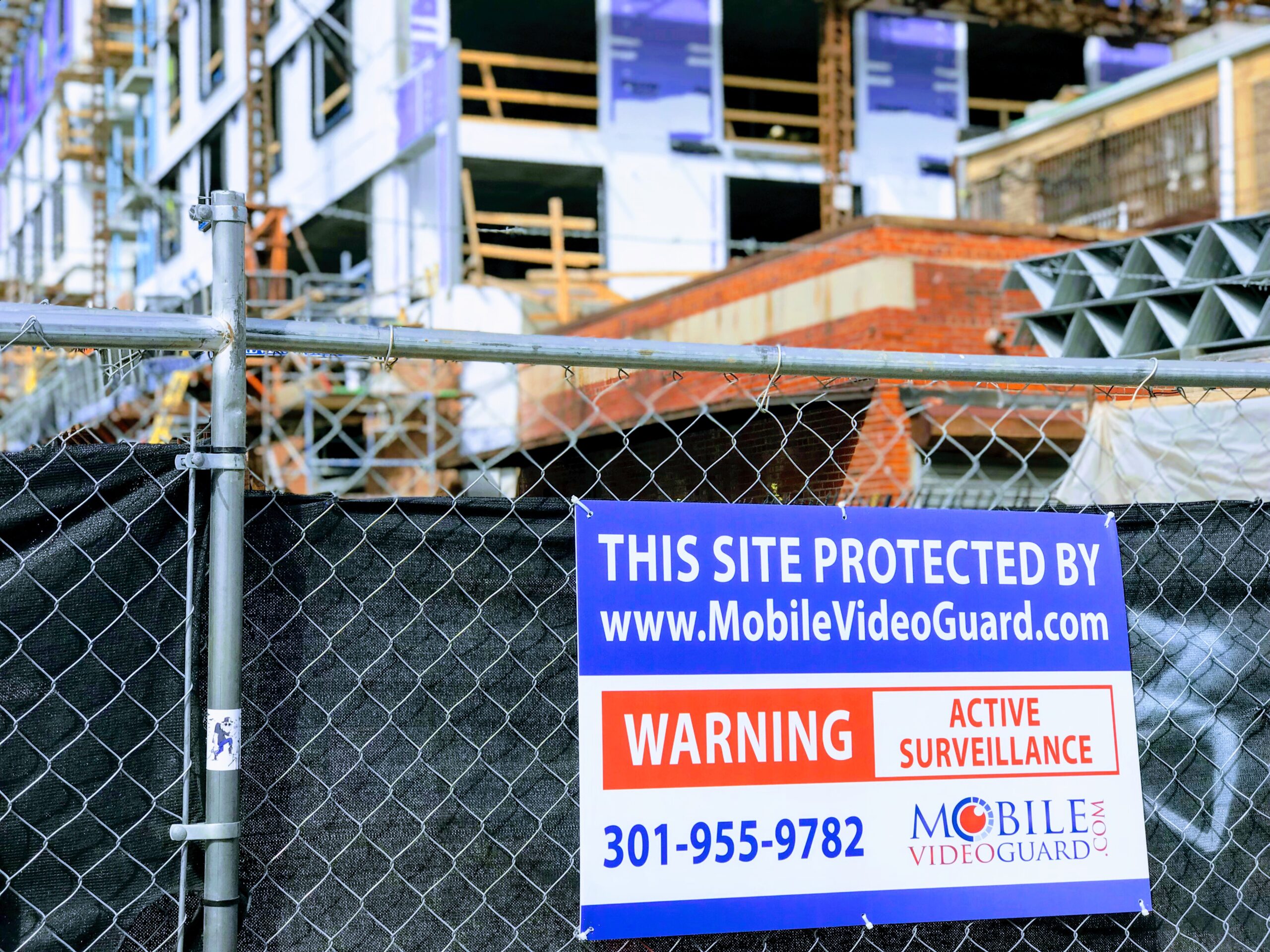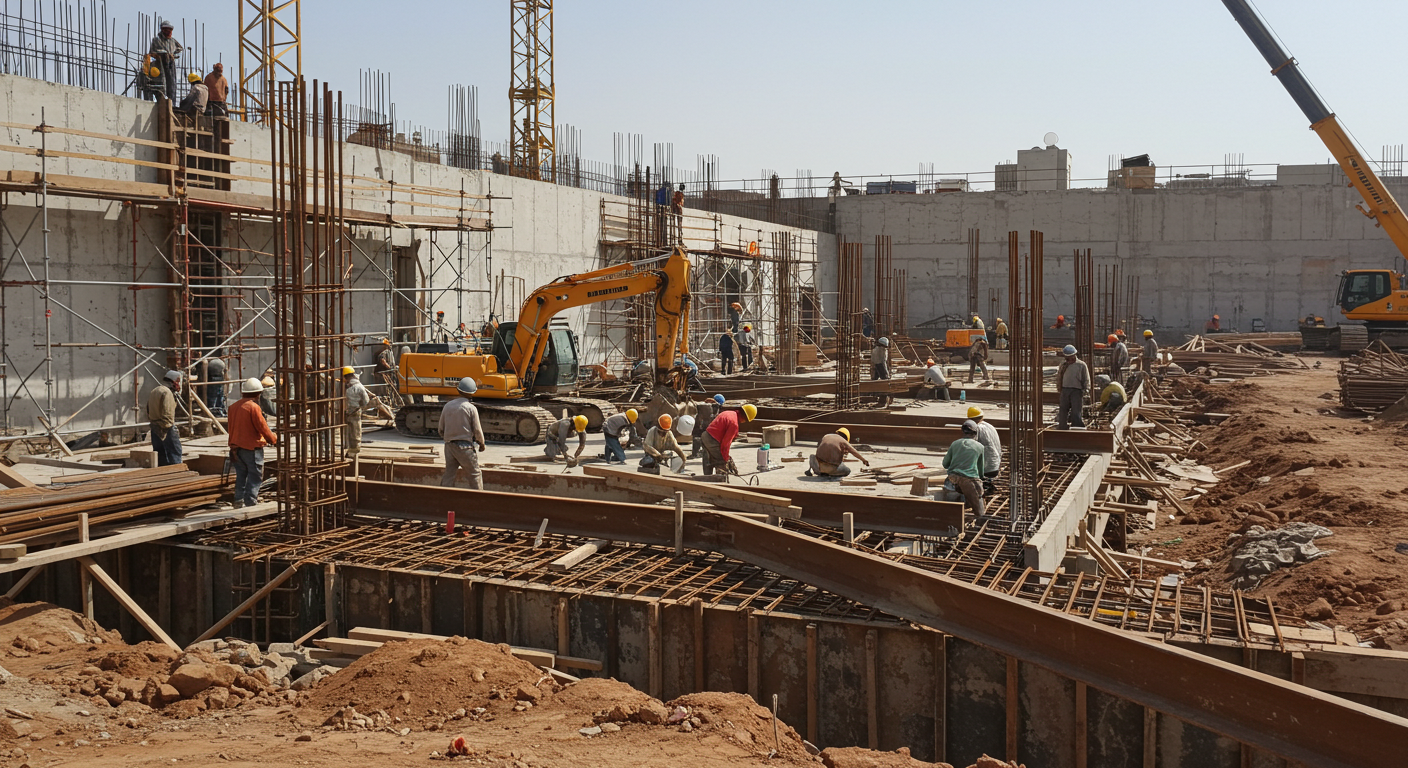Introduction
Construction theft constitutes a significant financial loss in the construction industry throughout the US. Every year, the economic toll of stolen construction tools, supplies, and equipment adds up to millions of dollars of lost revenue and stalled projects. In this blog, we’ll explore the extent of construction theft in the US to uncover the true scope of the problem and its financial impact. We’ll look at construction theft statistics to paint a picture of the challenges contractors, workers, and law enforcement face when it comes to preventing construction theft.
Definition of Construction Theft
Construction theft is a form of theft that affects the construction industry in the United States. It involves the illegal acquisition of material, fixtures, tools, and other goods or services needed for the building of structures. This type of theft is a growing concern for the construction industry, costing the businesses and the US economy billions of dollars each year. As a result of its pervasiveness, construction theft is one of the most significant threats to commercial, residential, and government-funded building projects in the US.
Construction Site Theft Statistics
Construction theft is a serious crime that costs the construction industry billions of dollars each year in the US. In fact, roughly 85% of businesses in the construction industry have been a victim of some form of loss or theft. Construction theft can take many forms, from the theft of materials and tools on construction sites to fraudulent billing and exploitation of subcontractors. It’s essential that construction companies are aware of the scope of construction theft and take the appropriate steps to protect themselves. This blog will explore the scope of construction theft in the US – from the methods used to carry out the crime to the legal implications for those who are caught and convicted.
Industry Estimates of Construction Theft in the US
Industry estimates of construction theft in the US vary greatly. While hard numbers are difficult to come by, some estimates suggest the figure may be as high as $400 billion per year. By some estimates, as much as 10% of every job’s costs are lost to theft, either from theft of materials, equipment, or labor. The economic impact of this type of theft often goes beyond the initial costs, impacting corporate profits, product pricing, market share, and more. This type of theft is not limited to the US either, as reports suggest that theft is a global problem in the construction industry. Companies are looking for ways to combat theft in the industry and a partnership between industry stakeholders, governments, and law enforcement is seen as essential in order to protect jobs and resources.
Regional Differences
Different regions in the US vary greatly when it comes to the amount of construction theft they experience. The latest research indicates that construction theft is on the rise on the east and west coasts, with the states of California, New York, and Florida leading the way. On the other hand, states in the country’s midsection, particularly Texas, are seeing only modest increases in cases of construction theft. What’s more, the Midwest states of Michigan, Illinois, and Ohio have long histories of struggling with crime. This is thought to be due to the numerous large cities, which present more opportunities for criminals to commit construction theft. Whatever the reason, it’s clear that different regions have different levels of crime—and there is much work yet to be done when it comes to uncovering and tackling this ever-growing problem.
Causes of Theft
Poor Safety or Security Measures
Poor safety and security measures are often linked to construction theft, as inadequate protection of sites or equipment can be an invitation to theft or vandalism. Some preventative methods to take include installing comprehensive security systems, strong fencing or barriers around the site, and increased vigilance from employees, subcontractors, and site visitors. Additionally, having regular and thorough inspections of your site and equipment can help make sure there is less opportunity for theft to take place, and can make your working environment more secure overall. Removing the Threat Of Construction Site Thefts
Employee Disgruntlement
Employee disgruntlement can be a big factor in the prevalence of construction theft in the United States. Low wages and long hours can lead to disgruntled workers who may be more prone to committing thefts, and the same can be said of workers who feel underappreciated and not properly compensated. If workers do not feel valued or secure in their jobs, it can make them more likely to engage in criminal activities to ease the financial burden they are facing. It is important for construction companies to acknowledge the needs of their employees, and to ensure fair wages and adequate working conditions, in order to reduce the risk of construction theft.
Different Types of Construction Theft
Types of Construction Materials
Construction materials, from lumber and drywall to flooring and concrete, are among the most commonly stolen items from construction sites. Oftentimes, thieves will target a single item, such as valuable lumber, or they may take a large variety of items in order to build a complete structure. Construction materials can also be stolen from warehouses or retail stores. The theft of these materials results in significant financial losses for contractors and builders. Thieves are also able to sell these materials on the black market at a fraction of the normal cost, making it an attractive activity for those seeking to turn a quick profit.
Financial Theft
Construction theft can take various forms, but one of the most damaging and insidious forms is financial theft. Fraudulent practices such as embezzlement, misappropriation of funds, double-billing, and kickbacks can quickly add up and streamline profit out of a construction project. In most cases, financial theft is committed by a project manager or a contractor. Contractors are often able to exploit loopholes in bidding laws and contractors can use overly broad definition of certain expenses to pad the project’s budget. With complicated paper-trails and complicated accounting laws, it can be difficult to prove financial theft even after the project is finished. Those in charge of a project must be aware of evidence of financial theft and take immediate steps to keep the project’s money safe. Criminals can perform financial theft in numerous ways, but with the right understanding and attention to details, the scope of financial theft can be reduced or eliminated altogether.
Impact of Construction Theft
Damages Companies
Construction theft is a serious problem in the US and can cause massive losses for companies. Theft in the construction industry can include everything from a contractor walking away with unpaid tools to a large-scale theft of building materials and greater losses in time and money. Companies who invest in construction projects should take steps to secure their investments and protect themselves from the potential for theft. These steps could include frequent on-site checks, increased security measures, and due diligence when selecting contractors and suppliers. By understanding the scope of construction theft and taking steps to protect their investments, companies can help ensure that their projects are not derailed by costly crimes.
Satisfaction of Thieves
When it comes to construction theft in the United States, there are plenty of criminals who are looking to capitalize on the industry’s weak security infrastructure. Unfortunately, for those criminals, the satisfaction that they feel when they complete their crimes may only be temporary. Although stealing from construction sites can make them a quick buck, it often comes at a much greater cost. Not only are they subject to harsh criminal penalties if caught, but they must also increasingly contend with more sophisticated security measures at construction sites. This means it is becoming harder and harder for criminals to increase their ill-gotten gains, and the satisfaction they receive from their thievery quickly diminishes as a result.
How Companies Can Respond and Mitigate Loss?
Develop Policies and Procedures
One key aspect of preventing and reducing the scope of construction theft in the US is for businesses to develop policies and procedures in order to shape employee behavior. This includes devising codes of conduct, issuing employee handbooks that clearly define company expectations for personal conduct, and laying out the penalties for any theft that does occur. Additionally, employers should develop a system of checks that can help to identify any suspicious behavior, such as using alarm systems, installing video surveillance, or tracking project supplies. By taking the necessary measures to establish prevention policies and create a culture of honesty and integrity, employers can help to ensure the safety of their products and materials on job sites. Construction Site Security Plan – A Complete Guide
Implement Security Measures
No matter the scale of your construction site, one of the most important steps to take to protect your company from theft is to implement effective security measures. Your security plan should be comprehensive, outlining both physical security, such as fences, locks, and surveillance, as well as guidelines and policies to ensure your personnel adhere to proper protocols for identifying, tracking, and safeguarding company and client material and property. Keeping detailed logs of inventory and regularly monitoring the site can help to keep theft in check. Further, rewarding personnel for good behavior can also encourage positive practices and discourage theft. When it comes to theft in the construction industry, prevention is the number one priority, so be sure to take all necessary measures to protect your business.
Conversion to Action
Construction theft in the US often goes undetected and unseen, but it’s an all-too-real and costly reality for the construction industry. It’s important that we, as a society, take action to prevent construction theft. We must acknowledge the scope of construction theft and recognize the need to secure project sites and materials, build internal protocols to prevent and deter theft and provide regular training on security protocols. We must also support legislation, like HR 1247 – the Construction Theft Prevention Act of 2017 – that would provide federal construction sites an avenue to address theft and establish punishments for those who are caught stealing from construction sites. It’s time to take action and join together to fight construction theft in the US!
Summary of Findings
Recent findings from a study focused on unpacking the scope of construction theft in the United States reveal that theft is a major issue impacting the industry, with an estimated $1 billion of jobsite theft taking place each year. The phenomenon involves a variety of actors—from employees and contractors to vendors, members of the public, and organized crime. In addition to financial loss, construction theft can be associated with a number of other negative impacts, including delayed job completion, reduced job site safety due to stolen equipment, and reputational damage. To reduce the effects of construction theft, key strategies could include improved job site security including the installation of cameras and motion-sensitive lighting, greater account visibility for subcontractors, and improved communication between subcontractors, vendors and employers.



